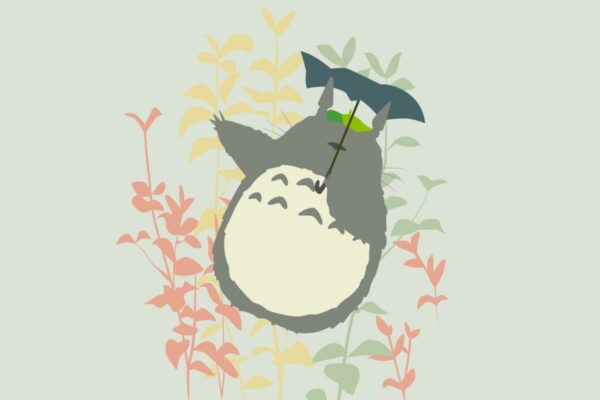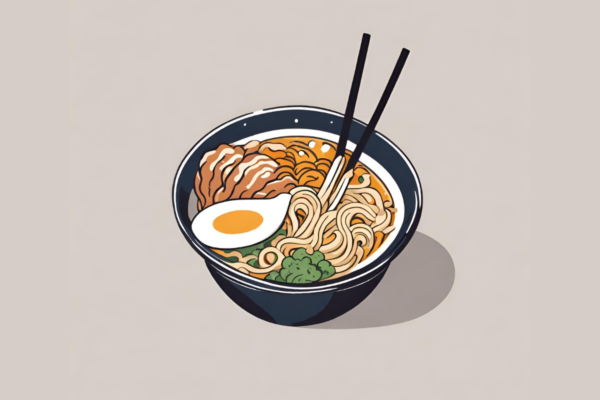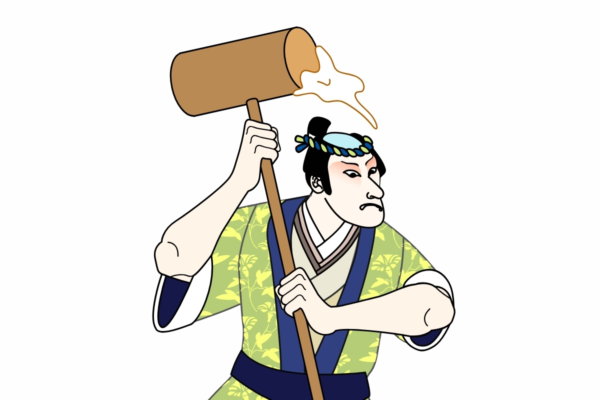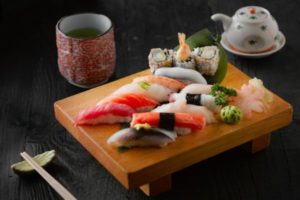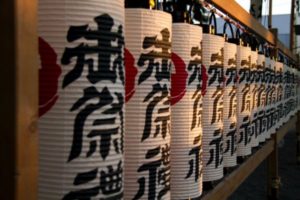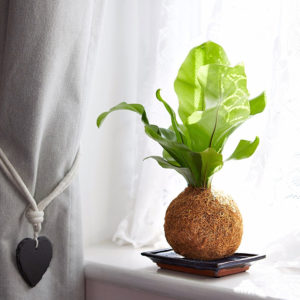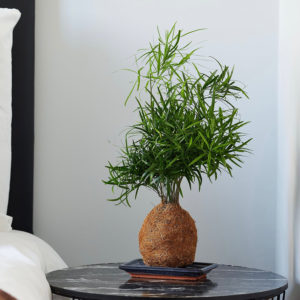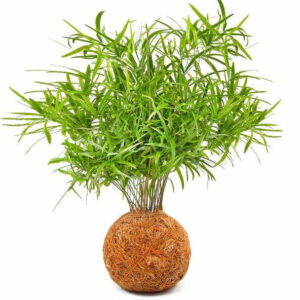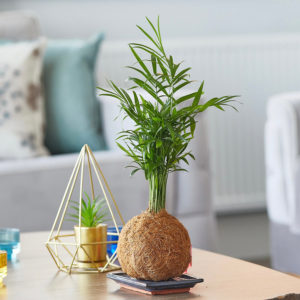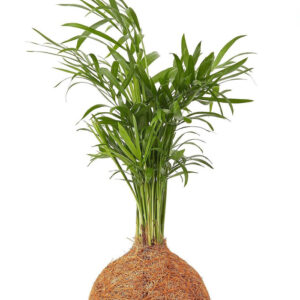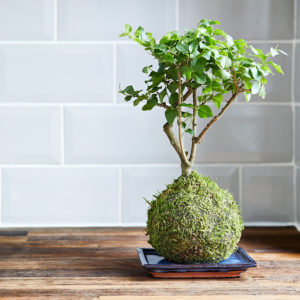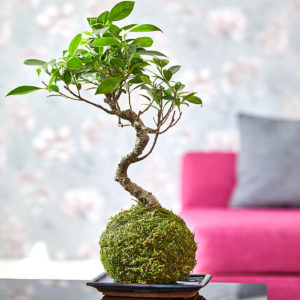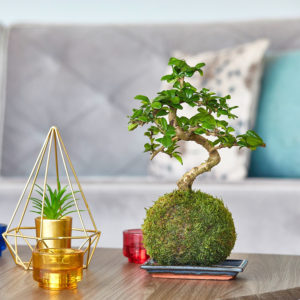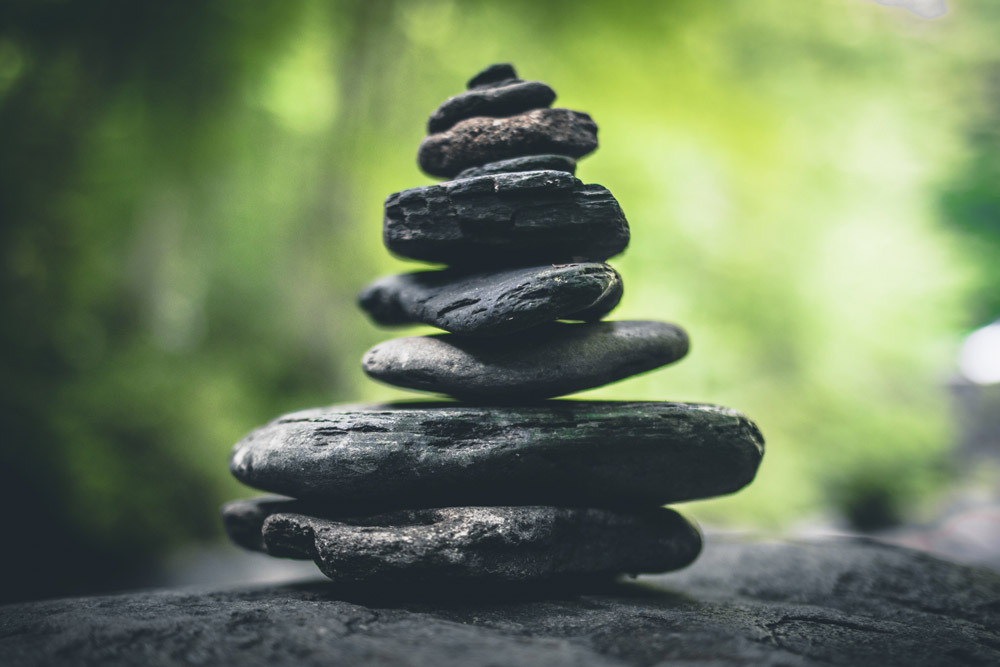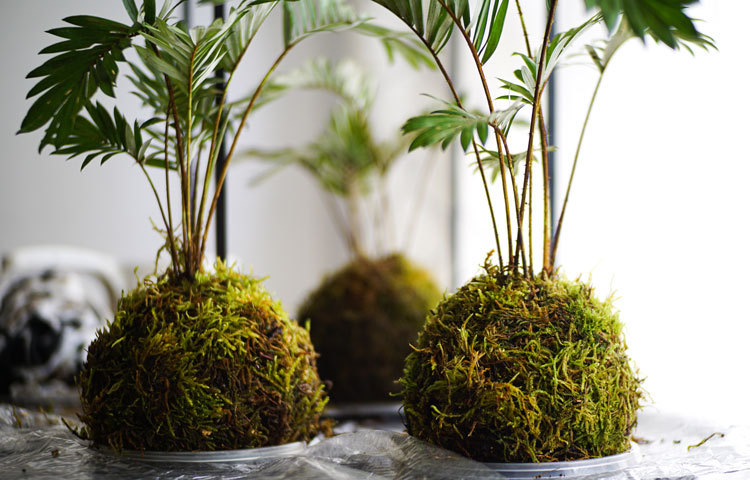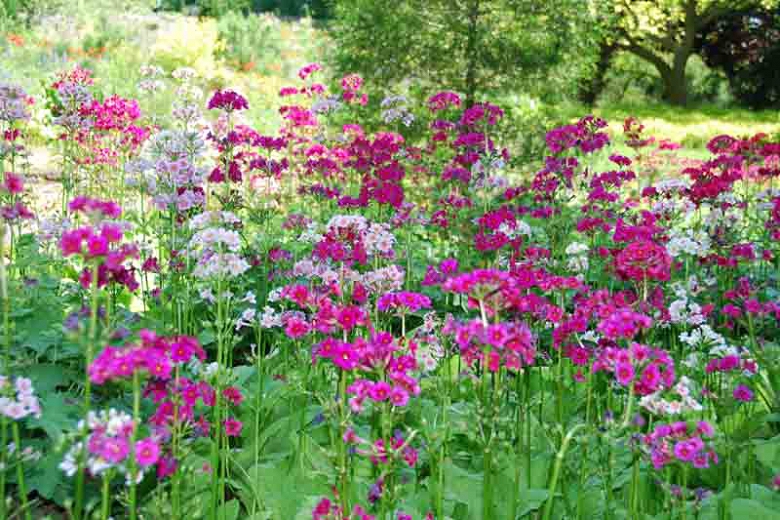If you haven’t come across the Kokedama, you’re in for a treat!
These hanging moss balls are a terrific living ornament to care for, whether you’re searching for a plant to fill the corners of your apartment or a hobby to keep you busy on a rainy day – the Kokedama is for you.
A Kokedama plant is an excellent option for those with no green thumb or for those who have never tried gardening before. It’s a form of bonsai, in which a moss ball is used to suspend the plant in the centre of the moss. The roots are then wrapped around the moss ball and held together with string. This allows you to care for it in a way that is similar to caring for cut flowers and it also makes them easier to transport since they’re already wrapped up.
Kokedamas can actually be made out of any plant, and ferns work best because they require low light and prefer cool temperatures.
This plant is perfect for those who live in urban areas with little space but still want a little greenery in their life! Find out why you should own a Kokedama Plant and where you can get your hands on one.
The Benefits of Owning a Kokedama

Air purification
Life on Earth would not be possible without plants. Not only do they produce new Oxygen from the CO2 we exhale, but they may also remove harmful toxins from the air we breathe via photosynthesis.
Because of the wide variety of materials used in furniture, carpets, and paints, modern houses have low levels of ‘chemicals’ in the air. Many houseplants help filter the air in our homes, lowering the number of harmful pollutants exposed to – creating a healthy environment and positive home/work atmosphere.
Research conducted and gathered by NASA in 1989 called the NASA Clean Air Study was intended for the identification of the air-scrubbing ability of certain house plants.
The NASA Clean Air Study was conducted to research ways to clean the air in space stations in 1989. Major results were gained on the ability of plants to remove toxins (like formaldehyde) from the air in their environment.
NASA discovered that plants and their filtration of air toxins were found predominantly in the plant roots and the associated microorganisms in the soil. Plants would destroy the pathogenic viruses, bacteria, and the organic chemicals in the surrounding air eventually converting all these air pollutants into new plant tissue.
Kokedama houseplants dissolve dangerous chemicals in the air such as benzene and transform carbon dioxide into life-giving oxygen. They’ve also been known to regulate humidity in the air, combating mould from the air usually in bathrooms or damp areas of homes.

You’re very own Zen Japanese Garden
The art of Japanese gardening is intended to give a sense of calm, tranquillity, and concentration. Zen gardens were created with aesthetic concepts in mind to harness the beauty and power of nature whilst enabling monks to disconnect and forget about the hectic world outside.
Zen spread across Japan with the rise of the samurai warrior class. As the new faith spread, temples and gardens dedicated to it sprung up.
The goal of a Zen garden was to help one relax and concentrate and facilitate Zen meditation.
With Zen Buddhism, the practice of cultivating beautiful gardens for meditation was practised. Respect for the environment was essential.
All kinds of moss can be found in Zen gardens in Japan. No matter how little room we have, we can still build our own little version of a traditional Japanese Zen garden by using Kokedama moss ball plants.
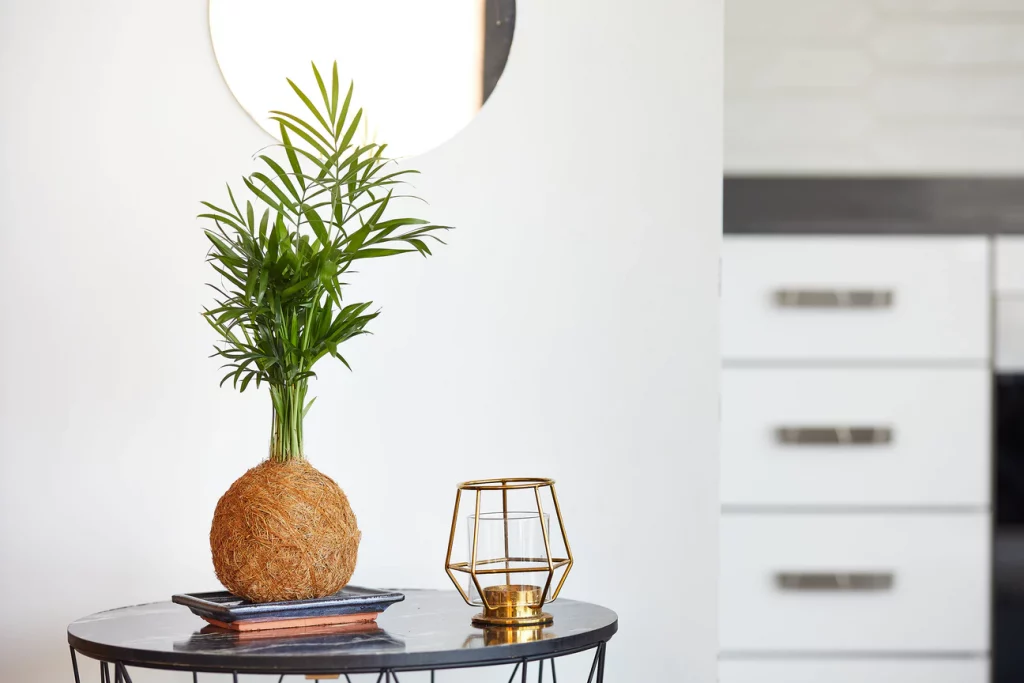
Decor
Owning a Kokedama is a wonderful way to decorate your house in a green and eco-friendly fashion. It’s simple to make a Kokedama arrangement, making it a great craft project for the whole family. Your arrangement projects can be used for presents, window decorations, and centrepieces on the table.
By hanging them from the ceiling or wall, your moss ball will go wonderfully with an urban tropical style.
Some have even been displayed in a glass container generally used for sealed terrariums. Sealing the Kokedama enables one to experiment with an independent water cycle.
Alternatively, you can plant your Kokedama outside of the moss ball in a variety of pots.

Caring for your Kokedama Plants
Kokedama Plant ownership and maintenance is commonly promoted as easy as pie. But keep your expectations in check! And don’t be fooled into thinking you won’t have to lift a finger. To get the most out of your Kokedama, follow these guidelines as your plant (just like any living thing) will still need a good amount of attention and care.
A Kokedama’s care is quite different from that of a typical houseplant. Because it’s exposed to the air on all sides, (especially when hanging) it can dry both quickly and thoroughly. Also, the watering requirements of Kokedama plants increase as they grow. Over time, you’ll have to decide whether or not you want to prune the plants, pot them, or start again with a new one.
Remember: Always give your plant time to acclimatise to its new home.

The watering of a Kokedama is the most critical component of its care. It’s not enough to just mist spray the ball of moss with water every now and then; it has to be done more often in addition to submerging.
By just spraying the moss ball, it’ll really tough to adequately humidify all of the roots that way – you’ll end up with more water on the floor than in the plant’s little soil area if you try to water the moss ball by just pouring.
Submerging the moss ball in a basin of warm tap water is the way to go!
Watering Steps
- Soak for 10-15 minutes.
- Lightly squeeze the moss ball to get excess water out.
- Transfer the ball to a colander for up to 30 minutes to drain any excess water.
- When the ball doesn’t drip anymore it’s ready to be put back into place.
What to look out for
Dry air is the Kokedama’s number one enemy!
The easiest way to tell whether you need to water your Kokedama is to feel its weight. The moss ball may be in need of water if it seems drier and lighter than normal.
If the tips of your plant’s leaves are turning brown, it’s time to water it! Make sure that any brown sections of the plant are removed so that it doesn’t spread.
Yellowing leaves and mould are two classic symptoms that your plant is overwatered or being dried properly. Never fear! if mould appears on your plant remove the damaged leaves by trimming them off or wiping them clean with a warm, damp cloth.
Feeding Your Kokedama
Always look to keep your moss ball moist at all times by spraying it, in situ, with a mister from time to time (usually every 1-3 days). Misting requirements will depend on the humidity and airflow in your home.
Do remember that because your plant is exposed on all sides it will always prefer to have a humid environment to remain hydrated. If you cannot offer this then your misting duties will have to increase!
Pro tip: Use a liquid seaweed feed diluted slightly in your watering container in the spring to give your Kokedama plants a little more oomph.
Lighting & Sunlight
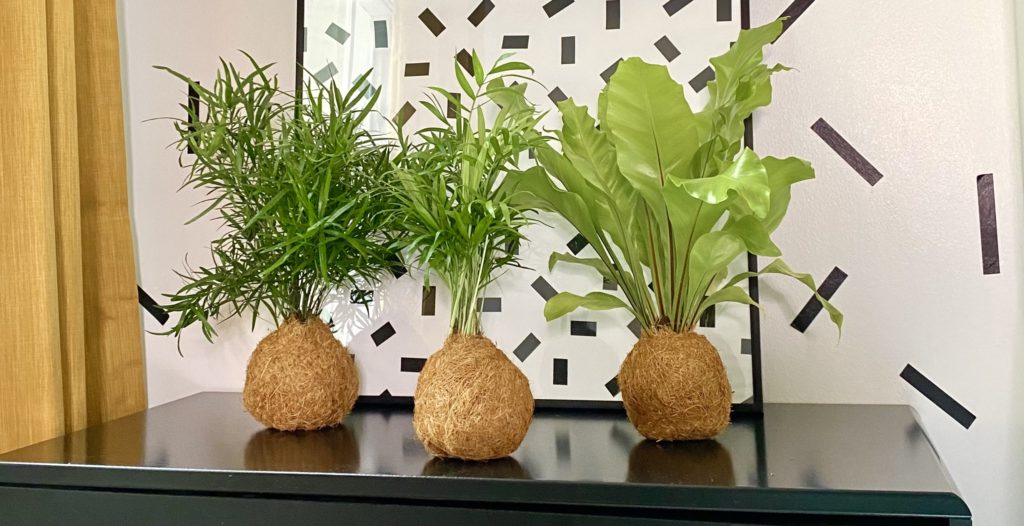
Because it’s made of moss, your Kokedama is more susceptible to drying up if placed in direct sunlight. Your Kokedama should be placed in an area that isn’t exposed to direct sunlight. Pick a spot in your house with some shade and keep an eye on it.
Make sure to keep your window blinds open so that your Kokedama gets the right amount of sunlight. In the summer, place them far away from the window. In the winter, move them closer to the light.
Additional Kokedama Care
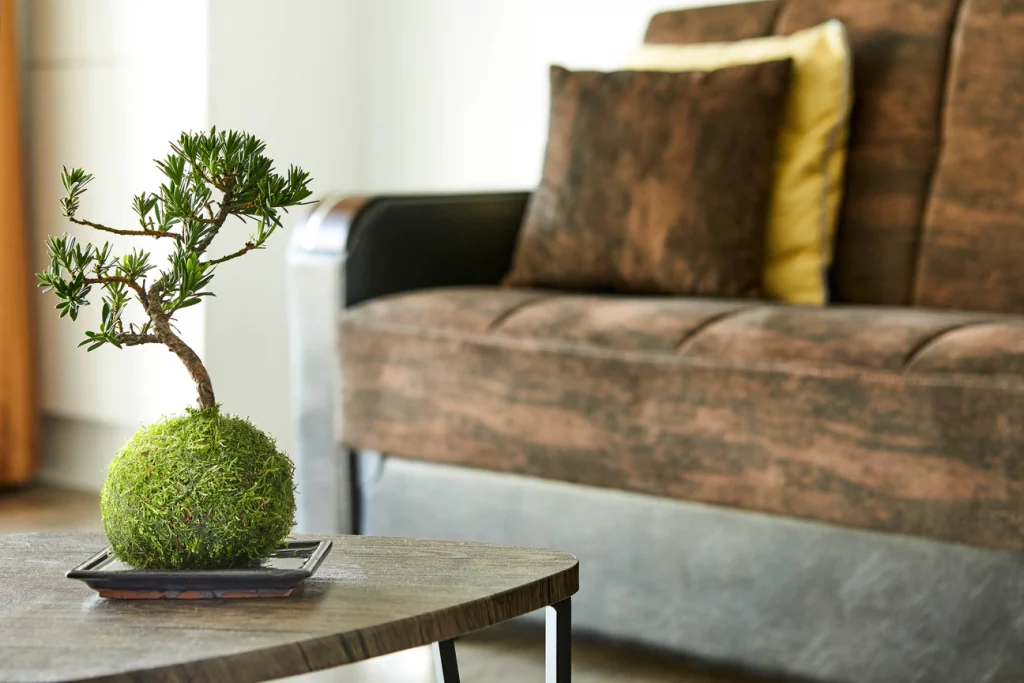
Fertilizing Kokedamas
It’s a good idea to fertilise your Kokedama plant in order to provide it with the necessary nutrients. Use half the recommended dosage of a water-soluble indoor organic plant fertiliser when watering your plants once a month.
If you want to keep your Kokedama looking its best and last as long as possible, make sure to use a modest amount of fertiliser.
Pruning Kokedamas
If you want to keep your plant healthy, you’ll ultimately have to trim it, snipping it back by half, from time to time. too large for its moss ball, you’ll have to remove it, pot it and replace it with something else.

The amount of water you give is affected by the size of the moss ball, the size of the plant, its exposure to light, the ambient humidity, and the season.
While watering once a week throughout the summer may be sufficient, two waterings a week may be necessary for the winter, and even three waterings a week as the plant develops in size.
Kokedamas need a high level of humidity in order to survive, but this can be an issue in many households. As the days become shorter and the nights draw in closer, the humidity in the air begins to decrease sharply.
As soon as the heating kicks on, the humidity in the air can decrease to a desert-like 20 percent or less, which is not unusual. And many plants, particularly those with thin leaves, might die as a result of this.
Ambient humidity should ideally be at least 50%. (Don’t forget that this sort of humidity is good for your health as well!)
Pro tip: Place your Kokedama over or on top of a pebble tray for an extra special look! A pebble tray is just that: a tray filled with pebbles and water. Its primary function is to increase humidity around the plant.
Most houseplants are tropical varieties, but most houses have dry, conditioned air. Pebble trays are a simple low-tech, way to produce a healthier and more humid local environment for your Kokedama.










